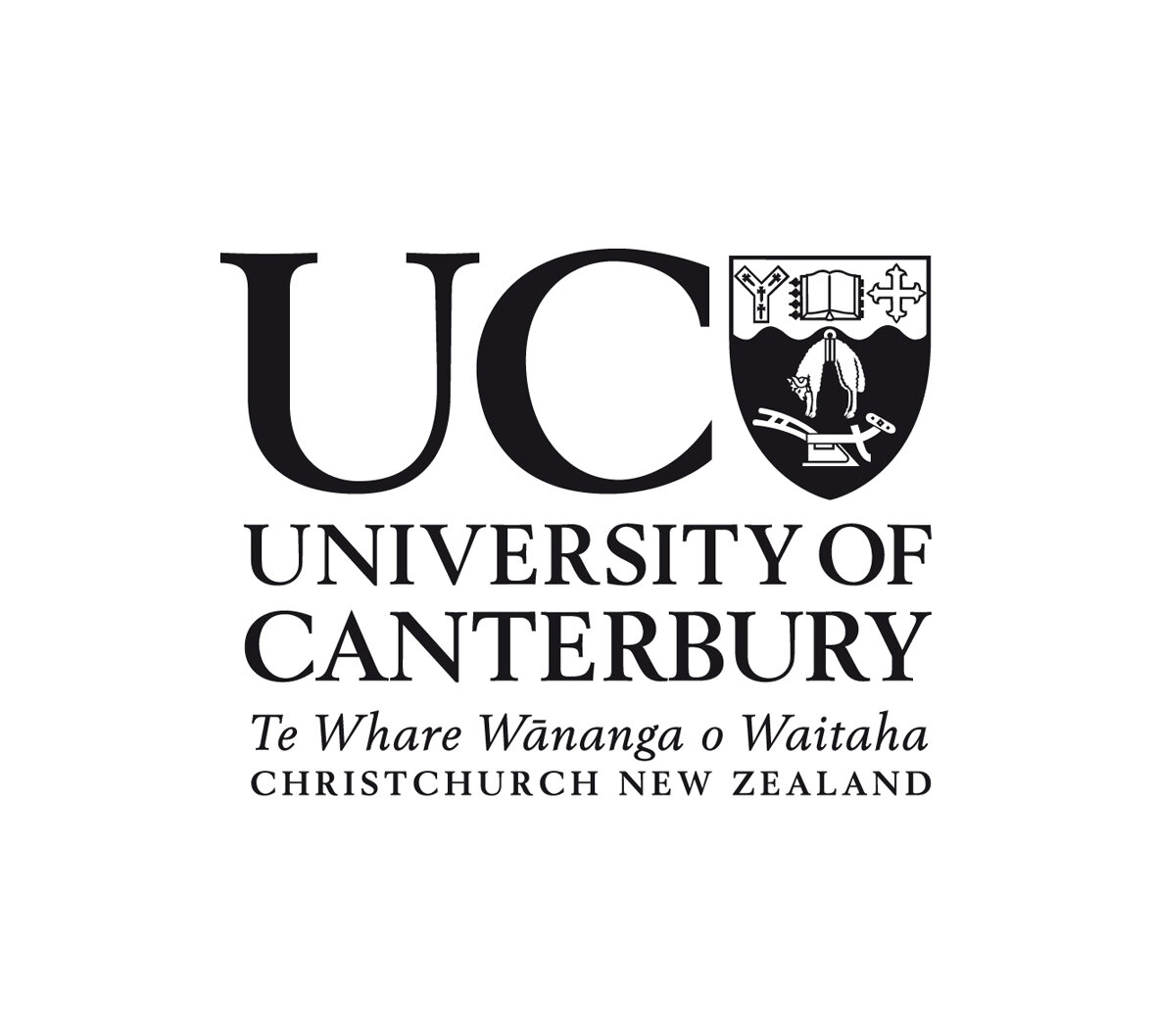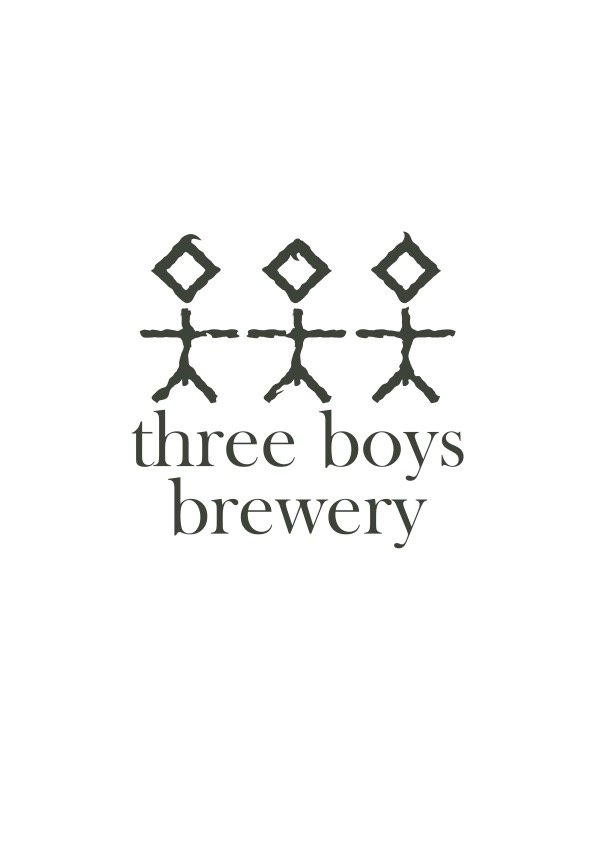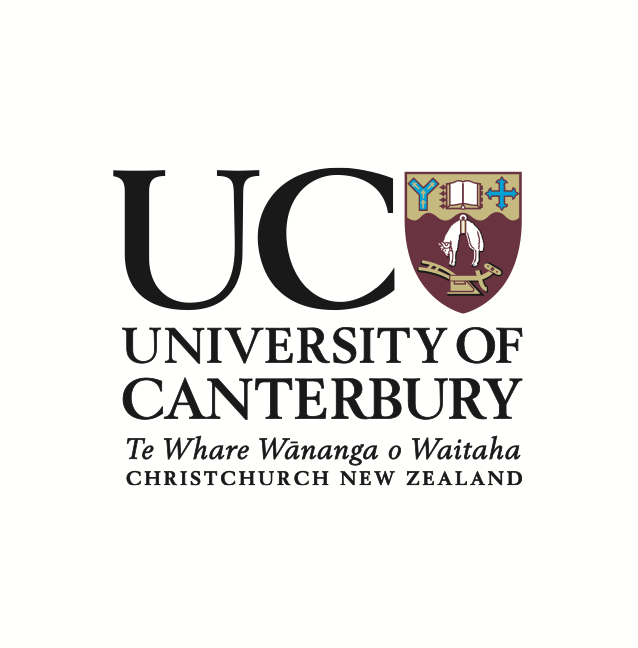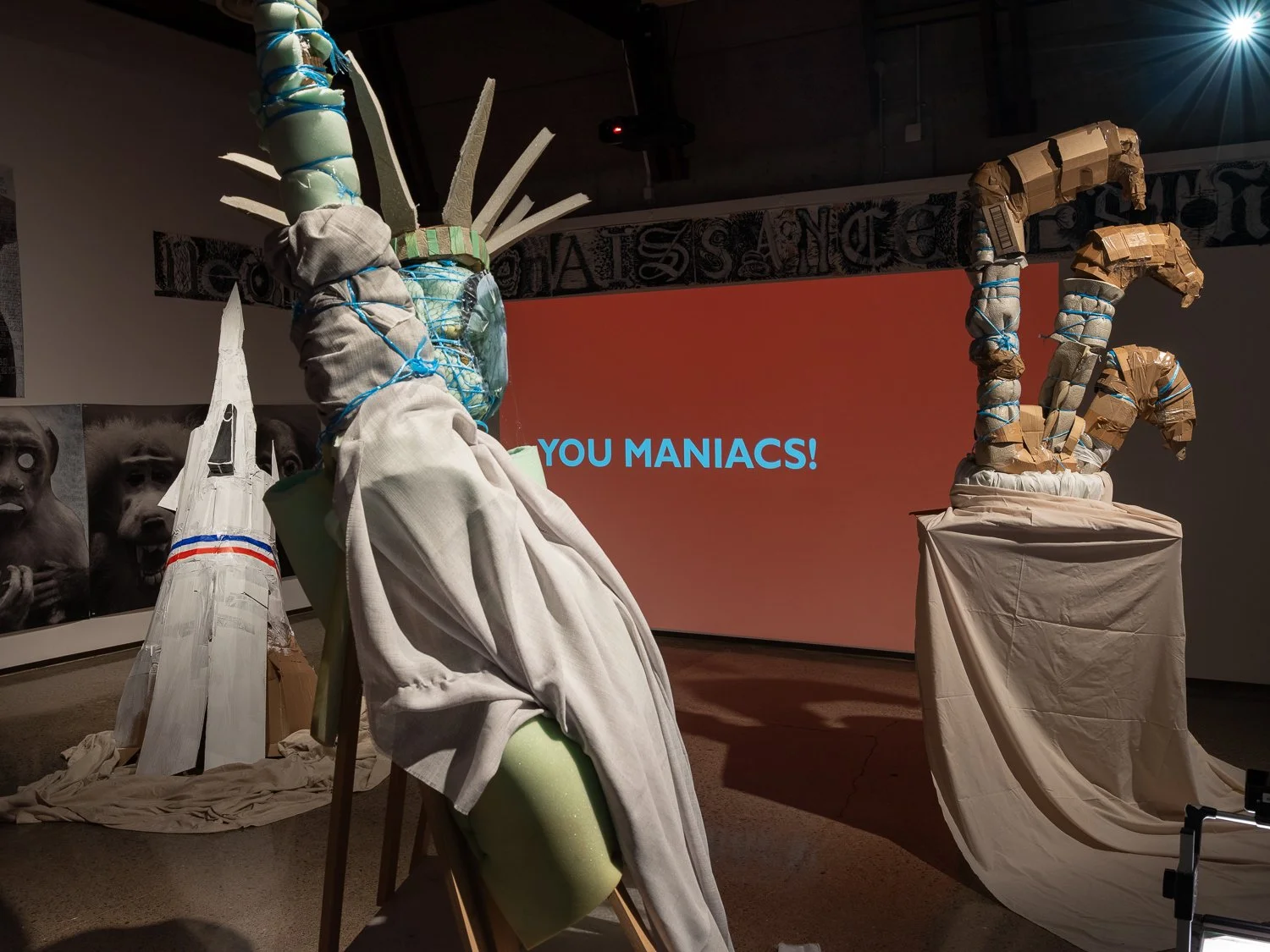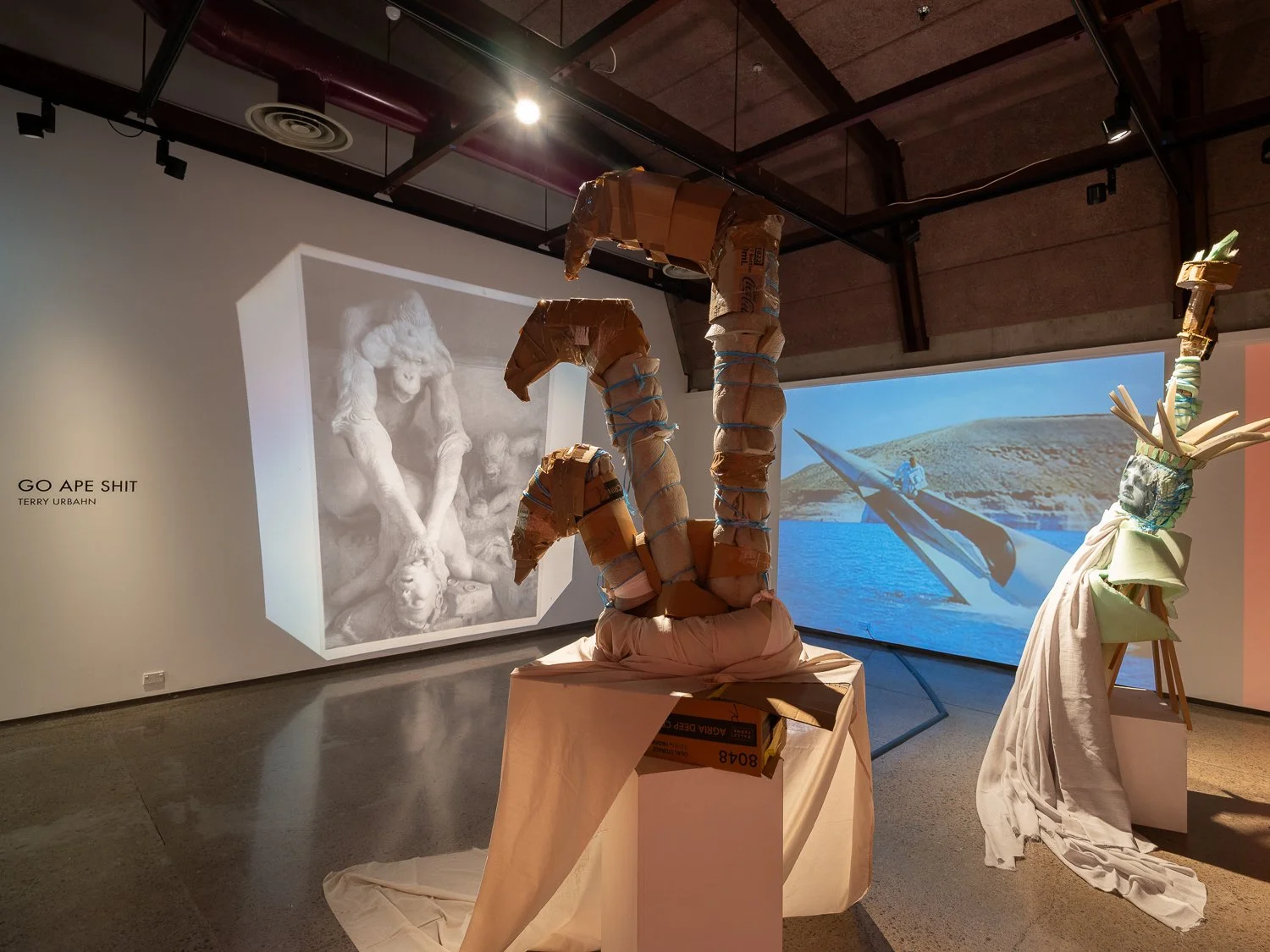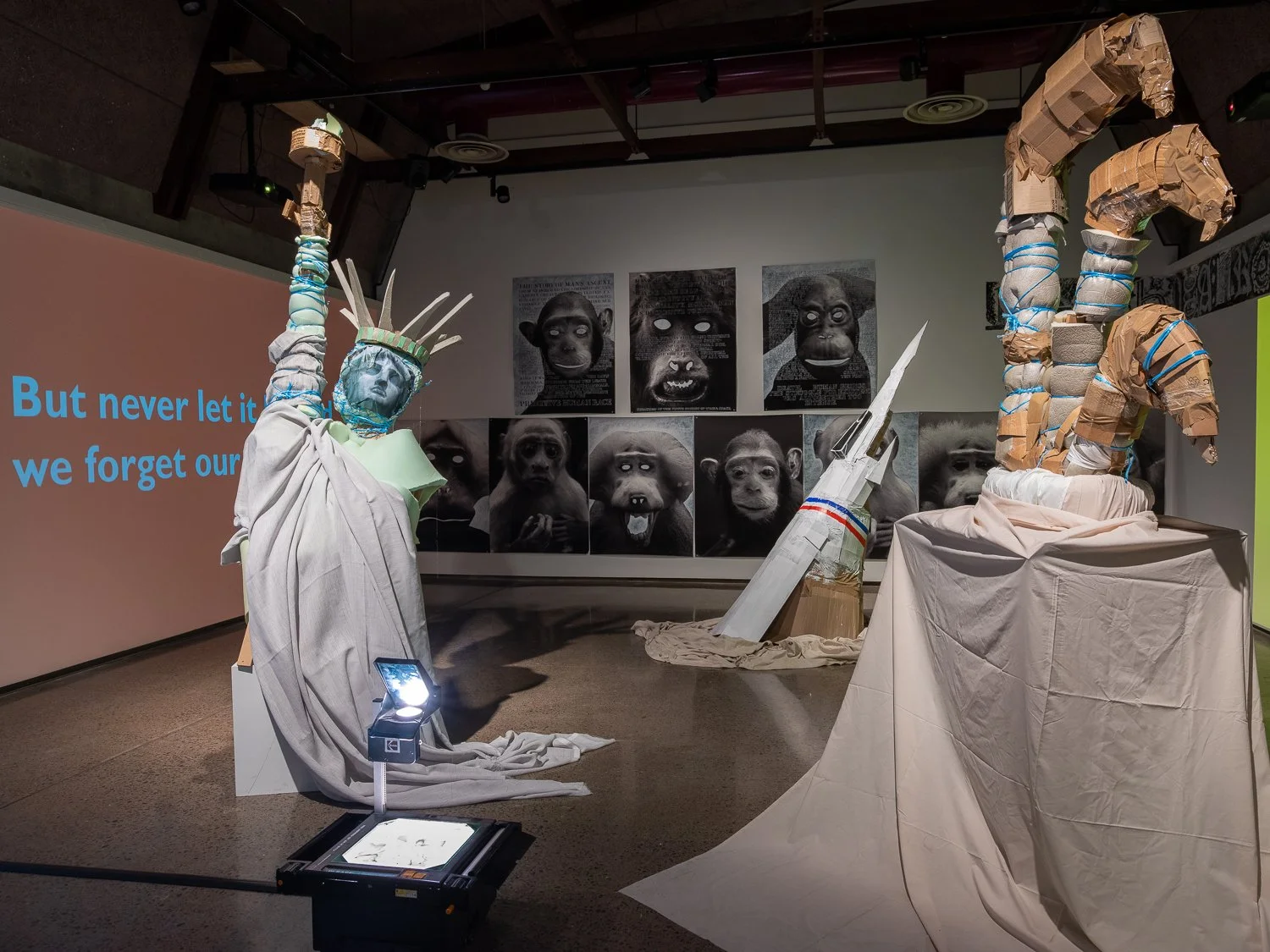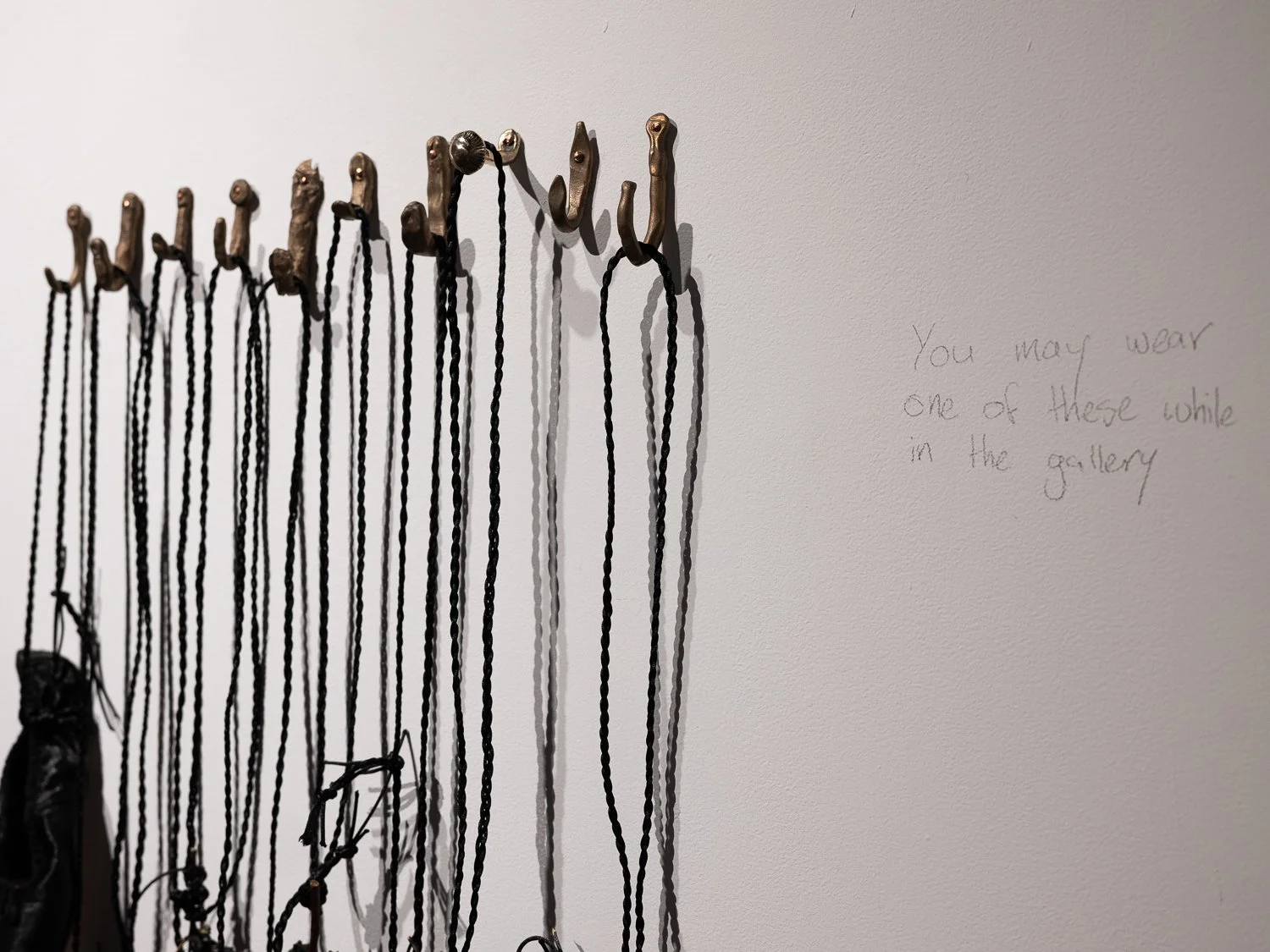Terry Urbahn
Go Ape Shit
About the artist
Terry Urbahn studied at the Canterbury School of Fine Arts, graduating in 1986. While he majored in painting his practice has broadened into sculptural installations that include photography, video and sound. Most recently he has collaborated with fellow 1980’s students Richard Reddaway and Grant Takle making New Cuts Old Music at Te Uru, Titirangi, Tāmaki Makaurau. Other project realised in collaboration with Reddaway have been shown in Mexico, Tasmania and Peru.
Urbahn’s practice explores the relationship between art and popular culture and he has produced installations such as Alien Space (Govett-Brewster Art Gallery, New Plymouth, 1995), Urban Museum Reality Service (Artspace, Auckland and Dunedin Public Art Gallery, 1997), The Karaokes (that toured New Zealand in 1998-99) and The Sacred Hart (Govett-Brewster Art Gallery, New Plymouth, 2007 and Auckland Festival, 2009).
His work has also been included in significant group exhibitions including Feature: Art, Life and Cinema (Govett-Brewster Art Gallery, 2001), Telecom Prospect (City Gallery Wellington, 2001), Close Quarters: Contemporary Art from Australia and New Zealand (Monash University Gallery and Australian Centre for Contemporary Art, Melbourne, 1998), Hangover (Waikato Museum of Art and History and Govett-Brewster Art Gallery, 1995) and Art Now: The First Biennial Review of Contemporary Art (Museum of New Zealand, 1992).
A survey of Urbahn’s works, Terry Urbahn—Selected Works 1994-2008, was staged at the NZ Film Archive in Wellington in 2009 and his work is held in the collections of New Zealand’s public art galleries and museums as well as numerous private collections.
In 1986 he took up his first position as a museum professional, working as Exhibitions Manager at the Govett-Brewster Art Gallery. Since that time he has held many project management roles in museums and galleries in New Zealand, as well as for the New Zealand (2005 & 2013) and Australian (2009) Pavilions at the Venice Biennale.
Terry Urbahn has also worked in education as Head of School of the Wellington Institute of Technology’s School of Media Arts and lectured in fine arts at Massey University, Wellington and the Elam School of Fine Arts, University of Auckland.
He is currently project managing public art projects for the Auckland Council.
Jen Alexandra
Tie Three, So Shall It Be
Do you find that there is a spiritual greatness that operates and gives rise to difference within the material realm of deadlines and being able to be transportable – that All-ness, marvelling at its magnificence, and the reflection of the magnificence…?
About the artist
Jen Alexandra's practice combines sculpture, installation, and performance to explore the artists role as querent, and the relationships between human and non-human. She proposes that art can connect with other realms of experience, interpret visions, or serve as a mode of knowledge itself.
Objects, floating ontologically as artefacts and channels for intention, act as transitional objects between places. Alexandra's work honours the natural world as a sacred, living system, critiquing Western scientific paradigms that objectify nature and challenging colonial perspectives that view it as a resource.
For Alexandra, folklore, nature-based worship, and seasonal lore are ways to understand notions of spirit through studio-focused intuitive technologies approaching the unseen and spiritual as both a platform and tool for expanding understanding of creative practice and acts of devotion.
Jen lives in Ōtautahi Christchurch and is a doctoral candidate at University of Canterbury and was the Olivia Spencer Bower Awardee for 2024. contributed to the Speaking Surfaces project at St Paul Street Gallery in 2020, and was an Asia New Zealand Arts Practitioner Fund grant recipient in 2023. Recent solo projects include The Veil is Thin, Christchurch Art Gallery Te Puna o Waiwhetū (2021), Sisterly at The Dowse Museum (2023) and Tie One, The Spells Begun The Suter Art Gallery Te Aratoi o Whakatū (2024).
